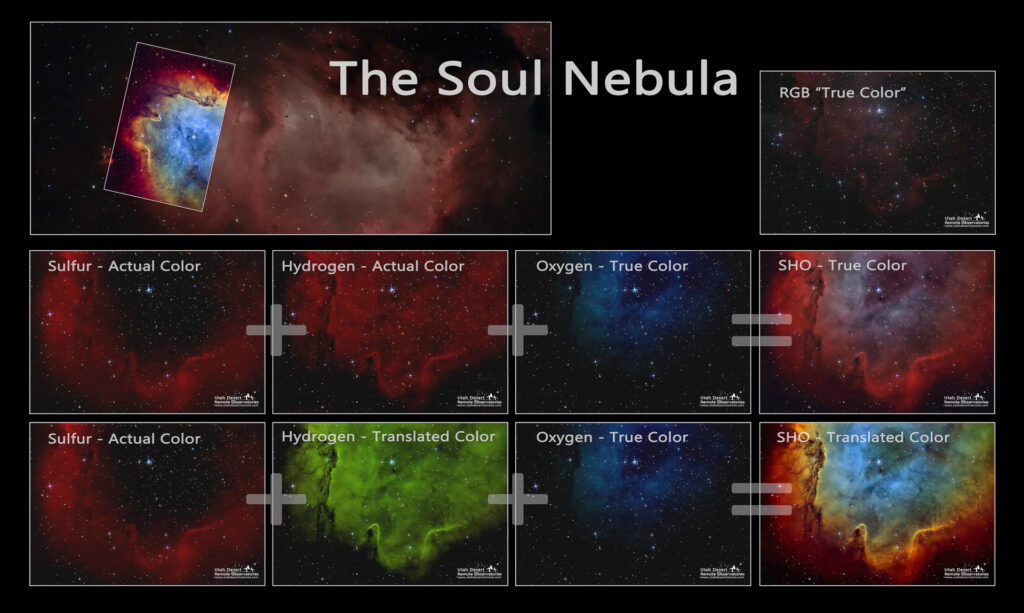
A common question people ask about astrophotography, “Is it real?” The simple answer is “Yes.”
The more complicated answer is illustrated here. First, consider a “true color” RGB image (top-right). This is basically what a simple color camera would record, and what our eyes would see if they could see color in the dark. This emission nebula is dominated by the red glow of hydrogen, but it also contains sulfur and oxygen as well as dust and other elements.
But, we can do better. The second version on the right was captured with narrowband filters to specifically record regions of ionized sulfur, hydrogen and oxygen. When energized, each one glows in its own characteristic color, but hydrogen is just barely less red than sulfur. In practice, they look the same. There is also a lot more hydrogen, so its red glow tends to dominate an image. The result here is a more detailed image where each element has its own true color, but you can’t tell the difference between sulfur and hydrogen.
In order to better visualize the difference between sulfur and hydrogen it’s useful to translate the color of the hydrogen to be even less red than it is naturally. In practice, that means shifting it from red toward green. The result is more color contrast between the three elements which aids our understanding (bottom right).
If you read a book that was translated from its original language into your native language you wouldn’t say the book is no longer “real.” It’s just as real, but it’s been translated from something you don’t understand into something you do understand.
I like to think of a narrowband image in the same way – it’s real, it’s just translated into a form that’s easier for us to understand.
